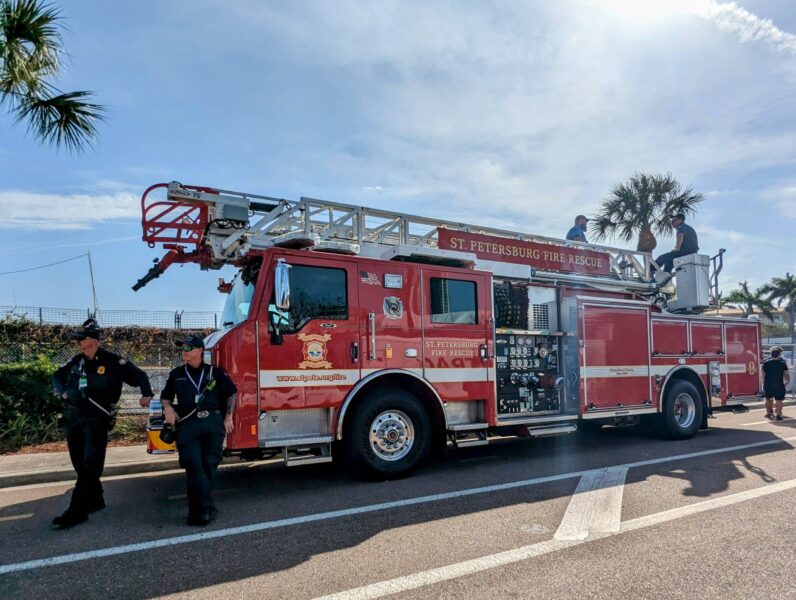Thrive
St. Pete Fire Rescue lists strengths, weaknesses

City council members unanimously approved St. Petersburg Fire Rescue’s (SPFR) strategic plan and recognized some of the agency’s most outstanding members at a recent meeting.
The “community-driven” strategic plan, which began in 2021 and runs through 2026, lists myriad goals, strengths and weaknesses for the organization, founded in 1888. The document states that the planning process tasked department members “to critically examine paradigms, values, philosophies, beliefs and desires, and challenged individuals to work in the best interest of the team.”
Brett Ciskoski, district chief and SPFR’s accreditation manager, told the council at its March 9 meeting how 32 internal and 24 external stakeholders partnered to develop strategic initiatives and goals.
From May through June 2022, representatives from similar-sized agencies across America visited the city to evaluate SPFR for re-accreditation. Ciskoski said one recommendation was to present the plan to council members for formal adoption.
“It’s a living, working document,” Ciskoski explained. “So, we don’t just make it and put it on the shelf.”

Founded in 1888, the St. Petersburg Fire Department changed its name in 1993 to better reflect its scope of services.
He noted that SPFR is already achieving some of the plan’s goals in specific areas. Those include health and wellness, internal communications, staff diversity and succession preparation.
However, Ciskoski noted a prevention lieutenant still serves as the organization’s public information officer. He said officials would continue to discuss implementing a dedicated position through this year’s budget cycle.
Councilmember Ed Montanari relayed that nearly everyone on the dais recently included SPFR funding in their budget priorities. He also expressed his desire to split the agency’s Master Station.
The facility, located at 8th Street South near Tropicana Field, currently houses Stations 1 and 5.
“I want to make sure that we – on the front side of the Gas Plant (District) redevelopment – that we think through splitting those stations up,” Montanari said. “And put one on the west side of the Gas Plant District and one on the east side to cover downtown.”
When asked about leadership diversity efforts, Ciskoski explained how each new employee receives three mentors with a corresponding rank through the succession planning and mentorship program. While the advisors can change, he said the pair typically moves up the organizational chart together.
He said that initiative, and the cadet and officer development programs, bolster departmental diversity. In addition, Ciskoski noted SPFR officials also made a concerted effort to feature a diverse group of internal and external stakeholders when creating the strategic plan.
Councilmember Copley Gerdes thanked the department’s over 350 members, who respond to more than 58,000 annual calls from 13 stations, for selflessly protecting the city and its residents.
“To all the first responders and their families, just a huge gracious thank you from me for all that you do,” Gerdes said. “To their families, thank you for sharing them with us. They didn’t get to make the choice for you to go out every night and every day, and the sacrifice you make is very appreciated.”
Strategic plan strengths
Some listed strengths of the SPFR include:
- Proactive public education and community outreach.
- Commitment to personnel health and wellness.
- A history of hiring quality employees through a comprehensive and stringent process.
- A well-maintained fleet and facilities.
- Above national average arson conviction rates due to robust investigations.
- A robust pay, benefits and pension packages through the collective bargaining agreement.
Strategic plan weaknesses
Some listed weaknesses of the SPFR include:
- Its staffing levels, including succession planning and promotional opportunities.
- A lack of budget funding.
- The division between fire and EMS (emergency medical services) personnel.
- Challenges with cultural changes.
- Issues with public, internal and chain of command communications.
- A need for more equitable opportunity distribution.

St. Pete Fire Rescue award winners, their families, peers and city council members at the March 9 presentation. Screengrab.
Superlative winners
One listed strength was the annual awards to outstanding members by SPFR officials; along with their families, the awardees were recognized before the city council. Despite working 24-hour shifts, several of their colleagues also attended the ceremony.
Here are this year’s winners:
Firefighter of the Year: Nicole Howard
Paramedic of the Year: Andre Gutierrez
EMT (emergency medical technician) of the Year: Michael Conran
Fire Officer of the Year: Lt. Ehren Hollenback
“Thank you to everyone who took the time to come and support your peers,” said Council Chair Brandi Gabbard. “It really shows what a family you all are, and we, as St. Pete, are a family. We just want you to know how much we celebrate you …”







